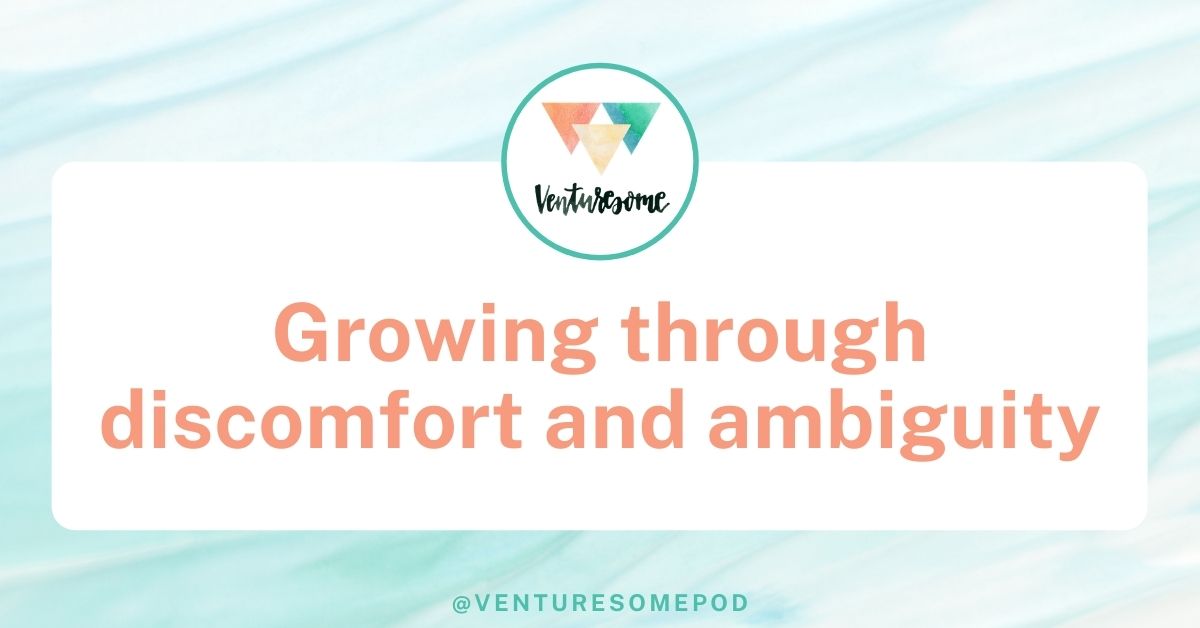
New is uncomfortable. Growth is uncomfortable.
When you take on an opportunity at a new organization, it’s jarring. You go from expert to unknown. From trusted resource to uncertain authority.
Just as much as they don’t know or trust you yet, you might not trust yourself. Imposter syndrome sometimes rears its head and your friends remind you, “They hired you for a reason. You’ve got this.”

I first experienced these feelings when I left Central Michigan University after nearly five years as the associate director of communications and social media. At CMU, I’d led our social media strategies and was the voice of the university online. I’d counseled vice presidents, deans and directors, and I had a seat at the table during critical conversations and crises. As a known, trusted communicator and adviser, I had established relationships across campus.
In my first few months as director of communications at Davenport University, I experienced the absence of the credibility I’d had at CMU. Not a single person on campus knew me or what I brought to the table. I had to build relationships and confidence in my expertise from scratch while learning to navigate the new realm of private higher ed after years at a public institution.
You can feel this shift when you take on new projects or work in other industries as well — like when I was asked to lead efforts for a client within the clean energy policy sector. I knew absolutely nothing about clean energy or policy, and had to stretch my skills in a new direction.
Sahil Bloom explained it well in a recent post, On Competitive Advantage :
“Discomfort leads to growth. It is an absolute necessity. If you train yourself to accept and embrace discomfort, you will always have an edge.”
Accepting uncertainty and risk certainly gives you a competitive advantage for your future career growth. My advice for these moments:
1. Listen and observe. You may see 15 things the organization could or needs to change, but first you need to hear what those on the front lines have to say about what they’ve seen and experienced over the years. Take your time and build trust by involving others in your team in the process of identifying, planning and implementing changes. Collect and sort through the ideas, wants, needs and the “this is the way we’ve always done it” comments as you formulate a holistic plan.
2. Identify your gaps and fill them. You were hired for your strengths, and sometimes it feels like a new job or project shines a light on your weaknesses. There are new terms you don’t know and things you’ve never done. There are new processes and expectations. Note the gaps in your experience and the areas you feel deficient and fill them by asking questions, listening to podcasts, reading and even enrolling in online courses.
3. Embrace the ambiguity. There’s no syllabus to tell you what’s next. Siri won’t tell you when to merge into a new lane or change directions. Sure, that can be scary. It’s also exciting because it means you have the power to map this journey yourself.
4. Acknowledge your fears, and don’t let them stop you. Whenever I make a change, I think of all the catastrophic ways that things could go wrong. I could fail. I could fall flat on my face. I could lose everything I’ve worked for. It’s fair to acknowledge the worst that could happen, especially if it helps you make contingency plans. Just don’t let it stop you from growing. Move forward despite your fears while considering and planning for the “worst” case scenarios if that makes you feel more confident.
It’s in the moments of fear, discomfort and ambiguity you grow the most. Don’t these feelings get in the way of your career momentum.
